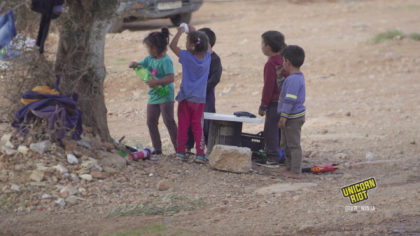Palestinians Commemorate Land Day with Demos in Negev & Gaza
Gaza City, Palestine – Marking the 46th anniversary of Land Day, March 30, 2022, thousands of Palestinians rallied at the blockaded Port of Gaza in Gaza City. Days earlier in Negev, olive seedlings were planted. Land Day commemorates the murder of six unarmed Palestinians, killed by Israeli solders while protesting Israeli land confiscations in 1976.
Over the last century, large swaths of land have been taken from Palestine to make way for the new state of Israel. Israel’s creation is a continual violent and decades-long colonial process, bankrolled by the United States government. A 2022 report by Amnesty International labels Israel’s system of governance over the Palestinians as “Apartheid” and one of “domination and crime against humanity.”



Celebrating “Land Day” in the Negev
On Saturday, March 26, Palestinians revived “Land Day” in the village of Sa’wa in the Negev region, in the south of current-day Israel, with a festival entitled “Resilience in the Negev.” Hundreds of Palestinians from the Arab community participated in the festival.
The memorial ceremonies included planting olive seedlings in the lands of Sa’wa village, which were bulldozed several months ago by the Israeli authorities. The European Parliament noted in 2012,
“Nearly half of Palestinian Bedouins live in villages in the Negev desert that predate the Israeli state but are officially unrecognized and therefore denied public funding. These villages lack paved roads, public transport, electricity or water. In this, the Bedouins face the same difficulty as many non-Bedouin Palestinian, who also live in unrecognized villages. Israel actively promotes the expansion of residential areas designated to its Jewish population in all parts of its territory, in annexed eastern Jerusalem and its environs, and in other areas in the occupied West Bank. However, many Palestinian towns are labelled ‘illegally constructed’ villages or ‘illegal settlements’.”
“Shackled at home: The Palestinian Minority in Israel,” European Parliament, Policy Department (PDF)
The festival’s activities, called by the “Higher Follow-up Committee for Arab Masses” in Israel, included artistic performances, national anthems, and speeches by a number of party leaders and public events.
It differs from the International Earth Day, which falls on April 22 and aims to spread awareness and interest in the natural environment of the planet.
British Colonialism, Israel and Palestine: A Brief History
Conflicts in historic Palestine go back many centuries. We take a quick look at how Britain’s colonial rule helped craft Israel and how it connects to the Palestinian Land Day.
An important part of the last hundred or so years is the Balfour Declaration in 1917. Written as Britain was conquering Palestine from the crumbling Ottoman Empire and after the 1916 Sykes-Picot Agreement in which imperial powers Britain and France split up Middle Eastern Arab lands to colonize, the Declaration is known as a part of the foundation of the Arab-Israeli conflict.
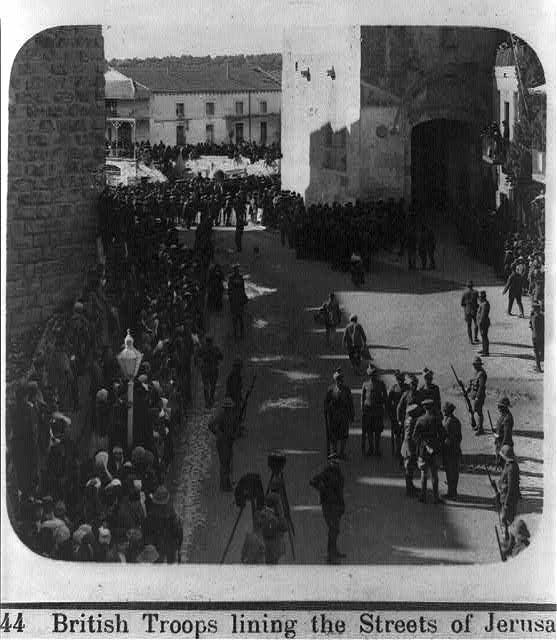
The Balfour Declaration was a public pledge, a “declaration of sympathy with Jewish Zionist aspirations” from the British government’s foreign minister, Arthur Balfour, to British Jewish leader Lionel Walter Rothschild stating their commitment to “the establishment in Palestine of a national home for the Jewish people.”
After the Ottoman Empire dissolved in 1922, the League of Nations labeled the land of Palestine as a British Mandate. The mandate gave Britain control over Palestine from 1922 until 1948, when the Zionist national movement declared the foundation of the nation of Israel.
During the British Mandate, the groundwork for establishing an Israeli state was laid amid several phases of deadly conflicts. British colonial administrators ushered tens of thousands of militant Zionists into Palestine and land purchases for Zionist settlements displaced many Palestinians.
Zionism is defined by Merriam-Webster Dictionary as “an international movement originally for the establishment of a Jewish national or religious community in Palestine and later for the support of modern Israel.” Zionism arose as a reaction to anti-Semitic sentiment in Europe in the late 1800s with an early objective to claim the lands of Palestine and make a Jewish state.
Professor Joseph Massad at Columbia University notes Russian colonialism in that era along the Black Sea catalyzed Zionist political organizing. The former Ottoman city of Hacibey was expanded and colonized by Catherine the Great, and renamed Odessa in 1794. Vladimir Jabotinsky, the founder of secular “Revisionist” Zionism represented today by Israel’s Likud Party, was born in Odessa in 1880. Massad argues displacement of ethnic Turkic Tatars in Crimea (currently a Russian-occupied Ukrainian territory) gave further impetus to Zionist resettlement organizing in the Holy Land.
Transformations during the British Mandate of Palestine were expansive. The population grew from 750,000 in 1922 to 1.85 million in 1946, with the Jewish population increasing 725%, from 56,000 to 608,000.
By 1946, Jewish organizations controlled over 250 times the amount of land they did in 1920, at 1.625 million dunams. One dunam equals 1,000 square meters or 1/4 of an acre. Yet, this only represented a small portion of total land in ‘Mandatory Palestine’.
March 2022: Palestinians Prevented from Reaching Confiscated Lands in Qusra, Gassed by Occupation Forces
After the British Mandate for Palestine collapsed, Israel was declared a state on May 14, 1948. Military forces then immediately destroyed hundreds of Palestinian villages, displacing up to 750,000 mostly-agrarian Palestinians, turning over 80 percent of the total Palestinian population into refugees overnight.
Masses of Palestinians resisted and continue to resist. Over 13,000 were killed in May 1948. This became known to the Palestinians as “Al Nakba,” or “the catastrophe,” and is a related annual event to Land Day, but separate.
Meanwhile, Jordan’s military occupied the West Bank, and a ceasefire boundary became the “Green Line” between Israeli and Arab forces. The Jordanians expelled Jewish residents of East Jerusalem, while Palestinians were forced out of nine neighborhoods in West Jerusalem, including via the Deir Yassin massacre on April 9, 1948, when Irgun and Lehi Jewish militia groups killed between 100-250 people.
This series of events is used by Israelis to justify the recent seizure of land in East Jerusalem’s Sheikh Jarrah neighborhood, which hosted refugee families from the west side of the city after the war. The Jewish National Fund and Israel Land Administration play key roles in holding title to lands owned by Palestinians before 1948.
Nearly 150,000 Palestinians who were allowed to stay within the Green Line, in the newly forged state of Israel, were given citizenship but Palestinians in those lands claim they’re denied the entitlements of citizenship that the Israeli citizens have. Palestinians sometimes describe the area within the Green Line as the “1948 territories”, as opposed to territories later captured by Israel.
“The reason why the State of Israel exists today and why today 1,500,000 Palestinian Arabs are refugees is that, for 30 years, Jewish immigration was imposed on the Palestinian Arabs by British military power until the immigrants were sufficiently numerous and sufficiently well-armed to be able to fend for themselves with tanks and planes of their own. The tragedy in Palestine is not just a local one; it is a tragedy for the world, because it is an injustice that is a menace to the world’s peace.”
Arnold J. Toynbee, historian, philosopher – quote via Unite Nations report ‘The Question of Palestine’
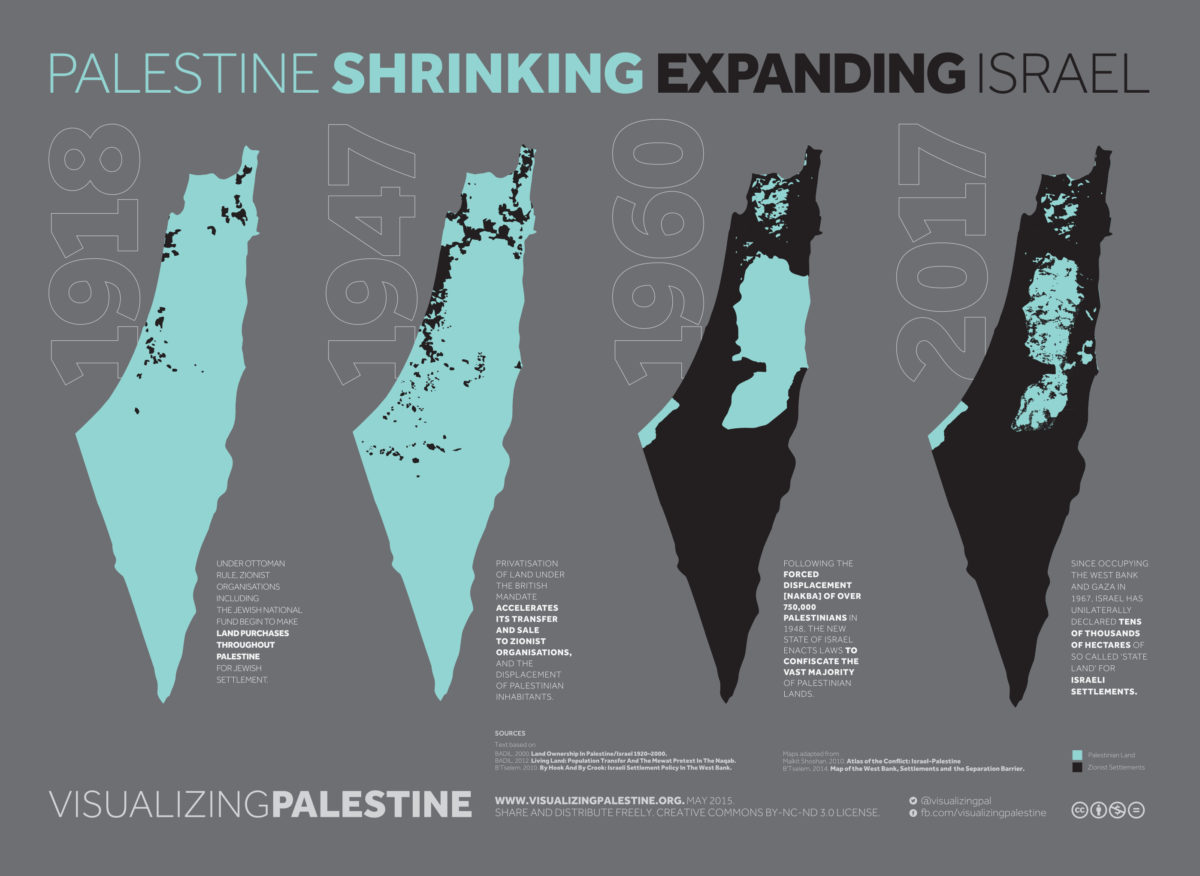
1976: The First “Land Day” for Palestinians
In 1967’s “Six-Day War,” Israel captured the West Bank, Golan Heights, Gaza Strip and Sinai Peninsula in a surprise campaign launched ahead of an expected Arab military invasion. Within weeks, the “Allon Plan” developed by Minister of Labor Yigal Allon to place Israeli settlements within the newly occupied territories, moved forward. Although the transfer of populations into occupied territories is considered a war crime in international law, it continues to this day in the West Bank, East Jerusalem and Golan Heights.
In the mid-1970s, as Israeli occupation forces shifted gears into building more colony settlements deep in the West Bank, Israel often acted to block Palestinian farmers’ access to their land while blocking the establishment of new Arab communities.
In February 1976, Prime Minister Yitzhak Rabin’s Israeli government made public their plans to take 20,000 dunams (~5,000 acres) of land in the Galilee region of northern Israel, a major Arab population center within the Green Line. The purpose was to develop Jewish settlement as part of their push for the Judaization of the Galilee.
As continued confiscations happened, so did resistance. A week after the announcement of the Galilee development plan, the National Committee for the Defense of the Land held a large meeting in Nazareth, gathering dozens of delegates from various Arab villages. From this meeting on March 6, 1976, a decision was made to hold a nationwide general strike on March 30 and call the day “Land Day.”
Organized as a peaceful protest, Land Day was created as a day where Arab masses could raise their voices to demand an end to the land grabbing policies. Palestinian communities in the West Bank, the Gaza Strip, and the refugee diaspora helped organize the first Land Day demonstrations and strike.
The strike on March 30, 1976, shut down commerce in villages and cities across the country along with acts of civil disobedience. Israeli forces reacted violently, raiding villages, shooting into crowds and “bludgeon[ing] anyone in sight and dragged people out of their homes to arrest them.”
Six Palestinians were killed that day and over 50 were injured by Israeli gunfire: Raja Abu Rayya, Khidr Khalayleh, Khadija Shawahna, Khayr Yassin, Ra’fat Zuheiri, and Muhsin Taha.
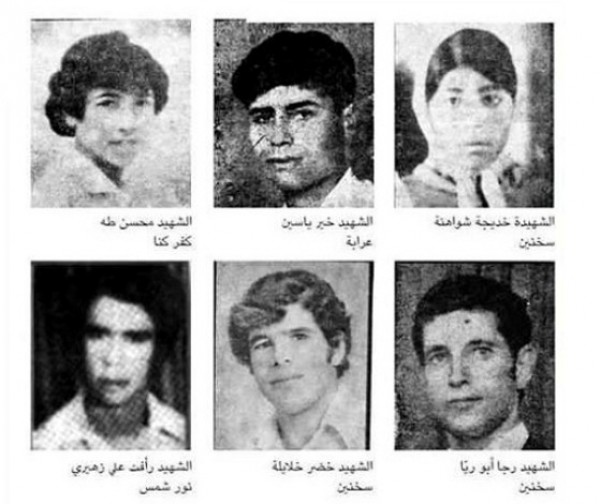
Since 1976, annual Land Day events across Palestine are held to demand the right of Palestinian refugees to return to their home and pay respect to those killed by Israel.
This year, thousands of Palestinians, including high ranking officials from Palestinian movements and top politicians, participated in a massive demonstration at the Port of Gaza. Participants raised Palestinian flags and launched balloons bearing pictures of Palestinian martyrs from 1976, including those killed in recent Israeli attacks.
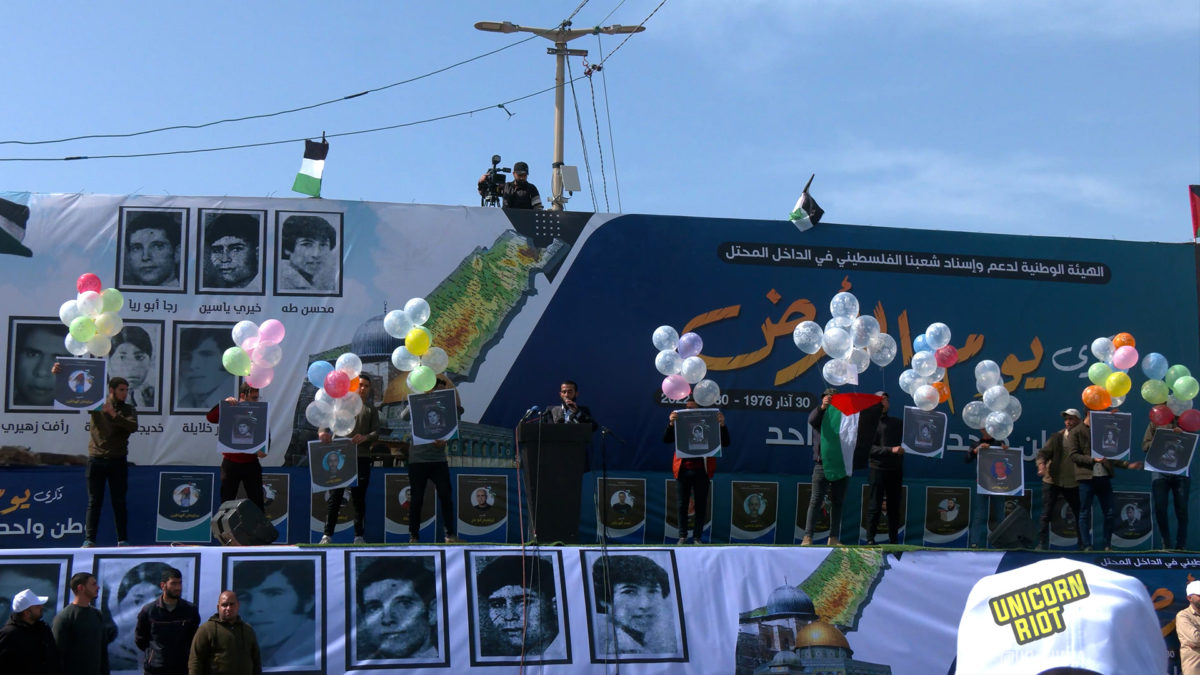
Israel’s land confiscation continues to the present time. Through years of violent conflicts, major Palestinian uprisings (intifadas), targeted attacks, missiles, Israeli bombings, and blockades, the Palestinian people are further separated from Israel, East Jerusalem and parts of the West Bank by walls and checkpoints.
Since the mid-1990s, millions of Palestinians in these territories have been relegated to an Israeli-imposed system (PDF) of institutional segregation with stringent restrictions on the movement of Palestinians.
After the first Intifada, the Oslo Accords partially replaced direct military occupation with the new Palestinian Authority’s limited self-rule in “Area A” zones, with Israeli security controlling “Area B” and “Area C.” (Under Oslo, Palestinians formally control civil affairs in “Area B” but in practice Israeli settlers continue to seize additional land.)
Attributes of sovereignty such as movement, borders, water, electricity, and urban development otherwise remained entirely in the hands of Israel’s occupying military government with the “Civil Administration of Judea and Samaria,” which enforces an Apartheid-style two-tier legal system to benefit the interests of groups like the “Yesha Council,” the umbrella organization for expansionist West Bank settler governments.
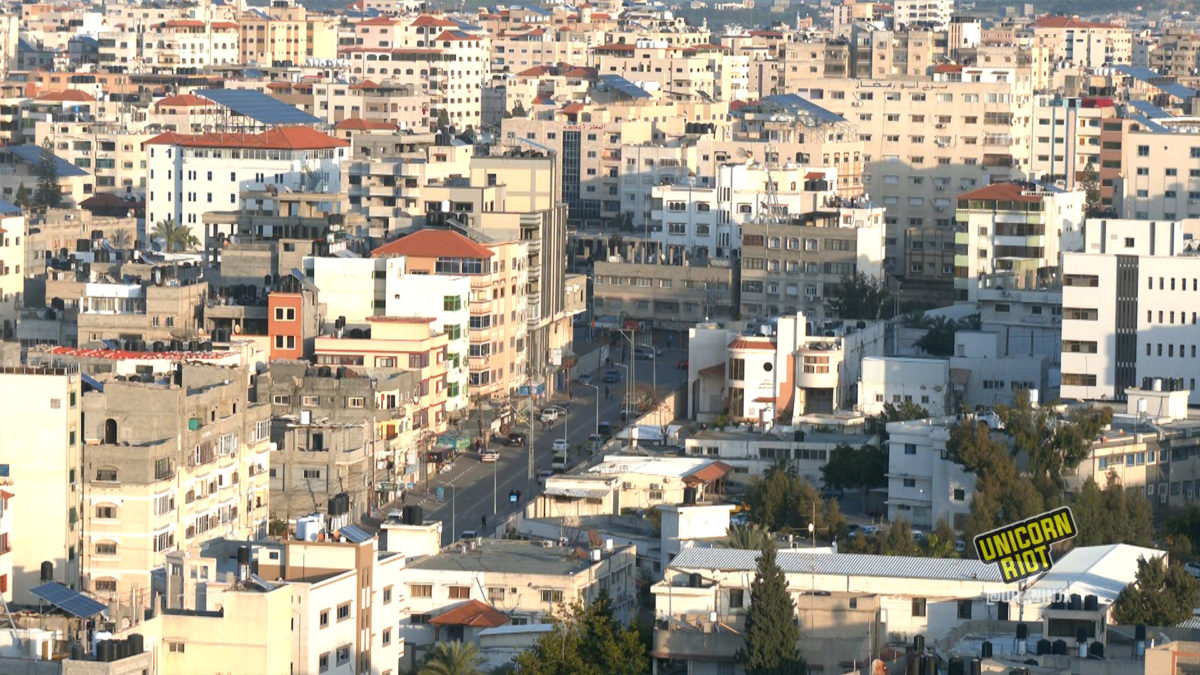
More recently, since 2007, Palestinians in the Gaza Strip have had their territory under an imposed land, air, and sea blockade by Israel. The territory is among the most densely populated in the world.
In February 2022, Palestinian human rights group Al-Mezan Center for Human Rights released a report ‘The Gaza Bantustan—Israeli Apartheid in the Gaza Strip,’ analyzing apartheid crimes in the context of “Zionist settler-colonialism in historic Palestine.” The report states that Israeli acts of apartheid are “perpetrated by the State of Israel for the purpose of establishing and maintaining domination by one racial group—Israeli Jews—against another racial group—Palestinians.”
Demonstrators at this year’s Land Day demonstration at the Port of Gaza called for international support to end the siege of Gaza.
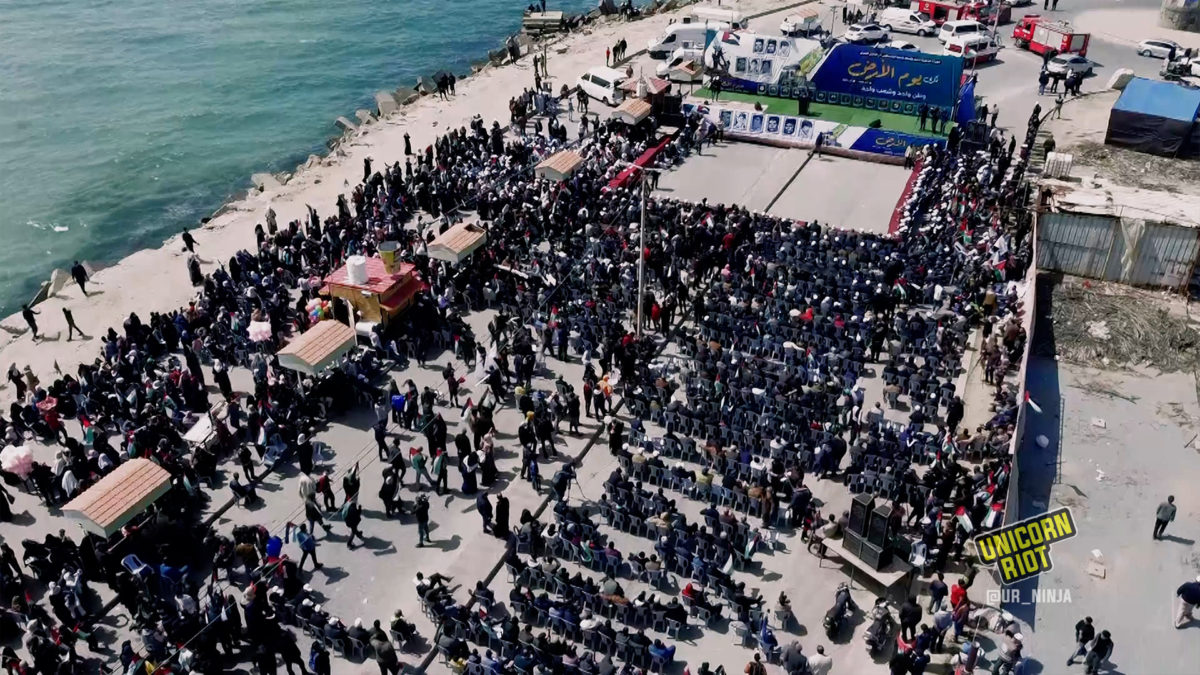
Continue to follow Unicorn Riot for more coverage from the frontlines in Palestine.
For more from Palestine and pro-Palestine protests click on link below.
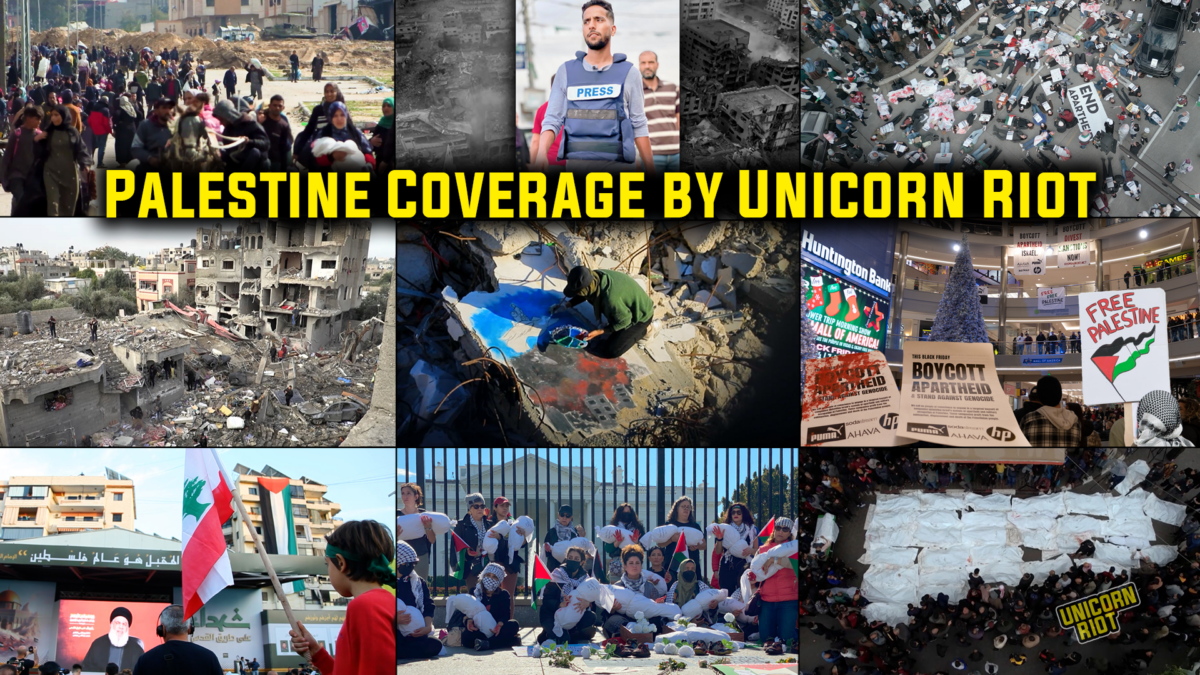
Follow us on X (aka Twitter), Facebook, YouTube, Vimeo, Instagram, Mastodon, Threads, BlueSky and Patreon.
Please consider a tax-deductible donation to help sustain our horizontally-organized, non-profit media organization:


